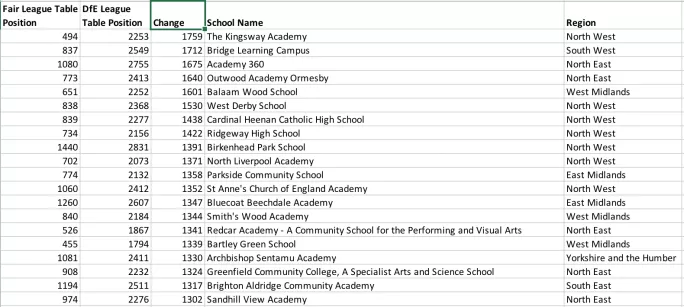A new Fair Secondary School Index has been published, ranking schools on a new progress score that aims to take pupils’ background into account.
The index has been published by the Northern Powerhouse Partnership in a report which claims that the current Department for Education performance tables, based on Progress 8, penalise schools for having high proportions of pupils from underperforming groups.
Full story: Faith and grammar schools drop in ‘fairer’ league tables
Opinion: Progress measure is biased and flawed
North: Schools in North penalised by league tables
Using a new adjusted progress score, a fifth of schools nationally see their league table standing change by more than 500 places.
Under the current system, secondary schools in England are held to account in large part on the Progress 8 measure.
Is Progress 8 a fair measure?
Introduced in 2016, the measure looks at the progress pupils in a school make between the end of primary school (age 11) and the end of Key Stage 4, when they sit their GCSEs (age 16).
It is a “value-added” measure, which means that pupils’ results at age 16 are compared nationally with the results of other pupils who had similar levels of achievement at age 11, to look at the progress individual children have made.
The greater the progress made by a pupil compared with the average for pupils with similar prior attainment, the greater the school’s Progress 8 score.
But a new study by researchers at the Centre for Multilevel Modelling, the University of Bristol, suggests schools should be judged on a more contextual Progress 8 measure, which takes into account other factors that can play a part in a child’s achievement.
Using state school GCSE data for 2018, the study authors compared the government’s current Progress 8 measure with an “adjusted” measure that also accounted for pupils’ age, gender, ethnicity, English as an additional language (EAL), special educational needs (SEN), free school meals (FSM) status and residential deprivation.
Here are the top 20 schools according to this new Fair Secondary School Index. The table shows a school’s ranking on both the new index and the DfE tables.
Here are the top 20 schools that gained the most rankings in league table standings in the new Fair Secondary School Index compared with the official DfE Progress 8 performance tables.
The full tables and regional breakdown can be read here.






